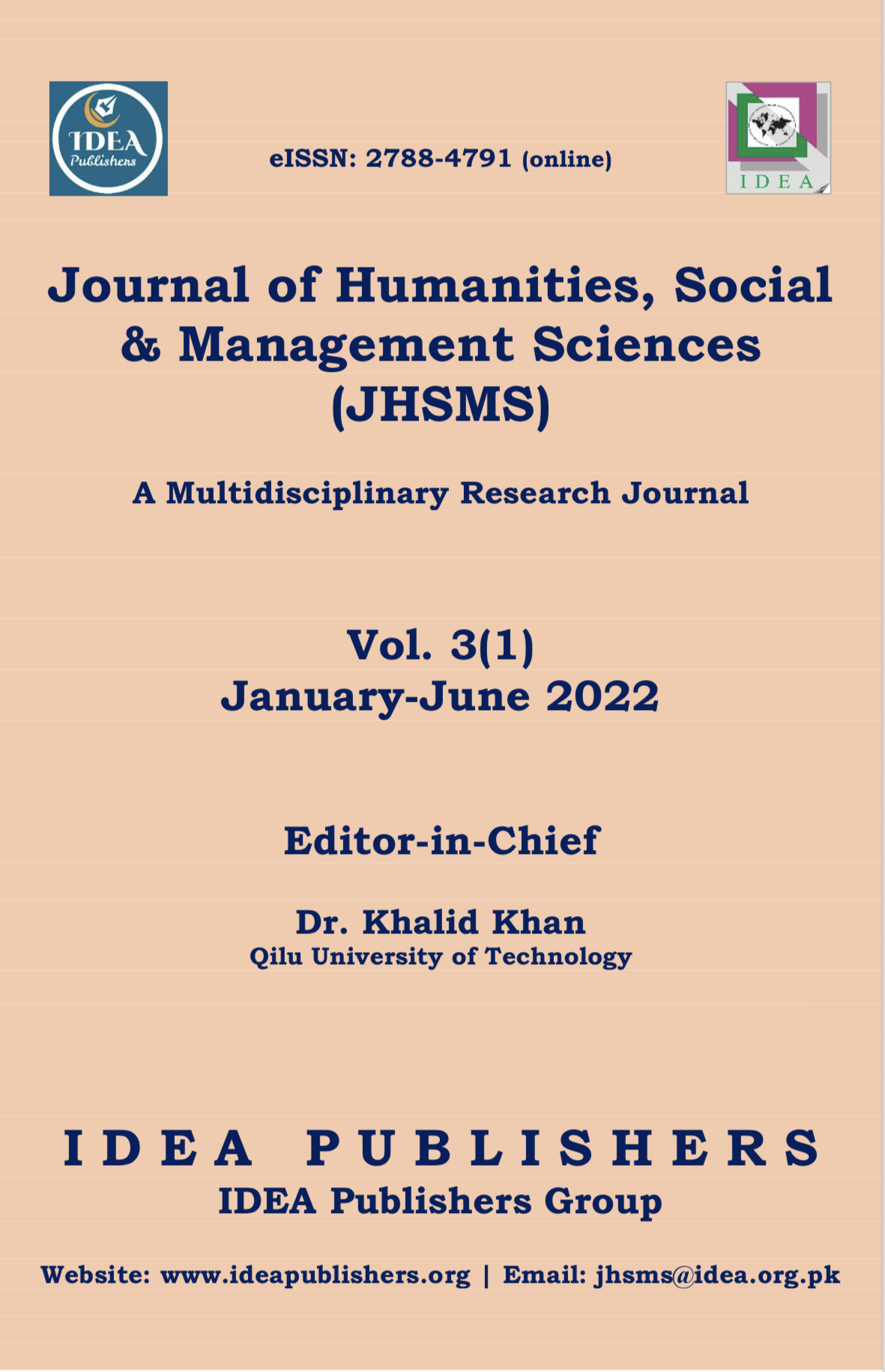Nationalism and production of precarious life: an anarchist critique of Island of a Thousand Mirrors
DOI:
https://doi.org/10.47264/idea.jhsms/3.1.32Keywords:
anarchism, state racism, genocidal violence, precarious life, nationalism, grievability, construction of hatred, grievable death, derealisationAbstract
Following Anarchist theorist Rudolf Rocker, the current paper strives to see the role of state racism in perpetrating violence as depicted in Island of a Thousand Mirrors by Nayomi Munaveera. The paper argues that state racism by majoritarian Sinhala elite defines a reductive notion of nationalism which inseminates genocidal violence against the minority community. This nationalism, providing normative definition of human dictates which lives are considered worthy and must be protected by bringing all apparatuses of state in action and which lives must be subjected to extinction by using the monopoly of state violence. The paper further intends to seek the nexus between nationalism and the patterns that it devises to subject ethnic minorities’ lives to precariousness. It further seeks to explore that the retributory forces replicate instead of eradicating violence. The paper further argues that nationalism not only defines worthy lives, it, also, provides a cultural frame for defining grievable death thus subjecting minorities to the violence of derealisation.
References
Alison, M. (2003). Cogs in the wheel? women in the Liberation Tigers of Tamil Eelam. Civil Wars, 6(4), 37-54. https://www.tandfonline.com/doi/abs/10.1080/13698240308402554?casa_token=x8I2L0p5LHEAAAAA:LSIP69oWKujblXZJdCJg2UxYrSpYvWefOktWBfLAU92wCWvZVvjagkp0XGeE1TkS9n6jCBdERnnl
Brownmiller, S. (1975). Against our will: men, women and rape. Fawcett.
Butler, J. (2004). Precarious life: the powers of mourning and violence. Verso.
Chatterji, A, P. (2004). The biopolitics of Hindu nationalism: mourning. Cultural Dynamics, 16(2), 319-372. https://doi.org/10.1177%2F0921374004047753
Chatterji, A, P. (2011). The militarized zone. In T. Ali, H. Butt (Ed.), Kashmir the case of freedom (pp. 93-124). Verso.
Das, S. (2017). Xenophobia and ethnic violence: Colombo in Naomi Munaweera’s Island of a Thousand Mirrors. The Criterion: An International Journal in English, 8 (4), 567-574. https://www.the-criterion.com/V8/n4/AM01.pdf
Fazil, M. M. (2019). State-minority contestations in post-colonial Sri Lanka. Journal of Educational and Social Research, 9(4), 157-157. https://www.richtmann.org/journal/index.php/jesr/article/view/10542
Jayasuriya, M. (2016). Terror, trauma, transitions: representing violence in Sri Lankan literature. Indialogs, 3, 195-209. https://revistes.uab.cat/indialogs/article/view/v3-jayasuriya
Meegaswatta, T.N.K. (2019). Violence as a site of women’s agency in war: the representation of female militants in Sri Lanka’s post-war literature. Journal of International Women’s Studies, 20(3), 27-43.
Munaveera, N. (2002). Island of a Thousand Mirrors. Pareera Hussain Publishing.
Nussbaum, M. (2007). The clash within: democracy, religious violence, and India’s Future. Harvard University.
Perera, V. (2020). Confessionary evidence and the state of exception”. Humanities Bulletin, 3(1), 190-200. http://www.journals.lapub.co.uk/index.php/HB/article/view/1532
Rocker, R. (2016). Nationalism and culture. https://theanarchistlibrary.org/library/rudolf-rocker-nationalism-and-culture
Somasundaram, D. (2007). Collective trauma in northern Sri Lanka: a qualitative psychosocial-ecological study. International Journal of Mental Health Systems, 1(1), 1-27.
Withanalagae, D. (2014). Female agency in a post-conflict narrative: Sri Lankan Case. Gujarissh. 3(1), 15-28.
Downloads
Published
How to Cite
Issue
Section
License
Copyright (c) 2022 Shaista Malik, Dr. Nighat Ahmad

This work is licensed under a Creative Commons Attribution-NonCommercial 4.0 International License.
Please click here for details about the Licensing and Copyright policies of IDEA-PG.















